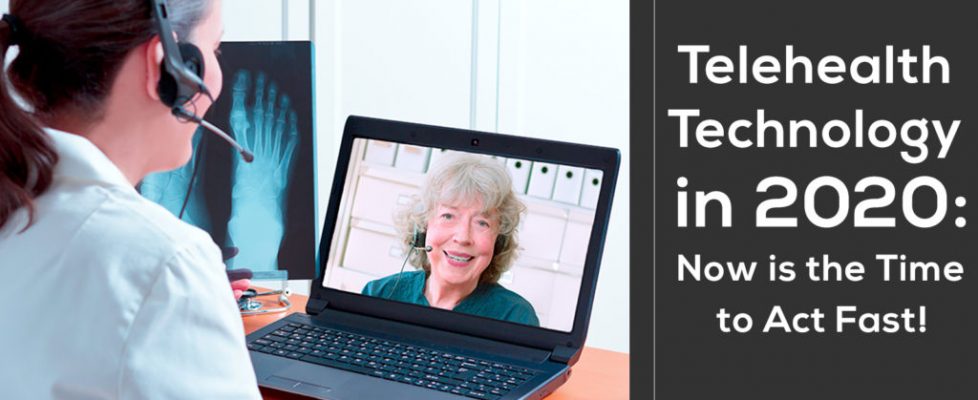Updated Telehealth Summary: Telehealth During COVID-19 National Emergency LinkedIn
On March 30, 2020, the Centers for Medicare and Medicaid Services (“CMS”) announced an additional expansion of telehealth services,[1] widening provider access to its 62 million Medicare beneficiaries. It also strongly encouraged state Medicaid programs and commercial payors to continue to do the same. Such action prioritizes the need of immediate and on-going care for vulnerable populations during the COVID-19[2] pandemic. As such, we expect states to continue to similarly expand telehealth services and Medicaid reimbursement for the same. CMS issued a Telehealth Fact Sheet and a series of FAQs to assist providers and patients make immediate use of the telehealth services now available.
TELEHEALTH PATIENT CARE [3]
1. Telehealth
As of March 6, 2020, while under a public health emergency, Medicare beneficiaries within the United States may use technology to have telehealth visits with their providers and providers will be reimbursed the same as an in-person visit. This is not limited to COVID-19 related care and may include all types of evaluation and management office visits, mental health counseling and preventive care. These visits may occur in the home, hospital outpatient units, nursing homes and skilled nursing facilities or other health care facilities and removes the requirement that such services be provided at originating sites or in a qualifying rural area. Also:
- “Qualified Providers” under this expansion of telehealth services include physicians, nurse practitioners, clinical psychologists, licensed social workers, nurse midwives, certified nurse anesthetists, registered dietitians and nutrition professionals.
- Telehealth office visits may now be conducted for new patients, as well as established patients.
- Modifier -95 should still be used for all telehealth visits, and the intended place of service should be included in the provider billing. This allows practices to receive the overhead fee (anticipated use of nurses, etc.).
- In-person visit requirements have also been waived for some services, including monthly in-person visits for ESRD care and in-person visits for nursing home residents. These services may now be conducted via telehealth (as appropriate).
- Medicare beneficiaries will be responsible for coinsurance and deductibles, however, HHS is providing flexibility for healthcare providers to reduce or waive cost-sharing for telehealth visits paid for by CMS.
- Check State requirements for consideration of provider licensing, billing and other regulatory rules regarding telehealth, including payment under Medicaid, for such requirements vary state by state.[3]
- Commercial payors are also taking steps regarding telehealth visits, such as waiving telehealth copays. Check here for a summary of commercial payor telehealth payment changes.
2. Virtual Check-Ins
- Regardless of whether a public health emergency is present, Medicare beneficiaries may continue to communicate with their physicians or certain other practitioners without going to the doctor’s office in person for a full visit for:
- Brief, virtual check-ins for patients with an established relationship with the physician or certain practitioner;
- Where the communication is not related to a medical visit within the previous 7 days and does not lead to a medical visit within the next 24 hours (or soonest appointment available); and
- Where consent is documented in the medical record prior to the patient using the service.
- CMS has also waived the requirement that virtual check-ins may only be billed for established patients, new patients may also be seen via virtual check-ins under the updated guidelines.
- Physicians and certain practitioners may bill for these virtual check-in services furnished through several technology modalities, such as telephone (HCPCS code G2012) or captured video or image (HCPCS code G2010).
3. Telephone Calls
Updated Medicare guidelines state that cell phones and other technology may be used for patient-provider communication, and telephone services may be reimbursed by CMS under CPT codes 98966-98968 and 99441-99443.
4. On-Line Patient Portals or E-Visits
Medicare continues to pay for patient initiated communication with their providers without going to the physician’s office through the use of online patient portals. The relationship with the provider must be previously established. In order for this communication to be billable by the physician, the communication must be patient initiated, but information on how to use the service may be initially provided by the practitioner. The communications may occur over a 7 day period. The physician may bill for this communication using CPT codes 99421-99423, depending on the minutes, and HCPCS codes G2061-G206, as applicable. Medicare coinsurance and deductibles would apply to these services.
REMOTE PATIENT MONITORING
In addition to telehealth, or telemedicine, providers may engage in remote patient monitoring for both new and established patients. The Medicare coinsurance and deductible would apply to these services.
HIPAA WAIVERS [4]
Effective immediately, the HHS Office for Civil Rights (“OCR”) will exercise enforcement discretion and waive certain HIPAA sanctions and penalties against healthcare providers that serve patients in good faith through everyday audio and video communication products, such as FaceTime or Skype, which may otherwise risk HIPAA violations during the public health emergency. OCR provides additional guidance related to several other technologies, including those that should specifically not be used, related to the provision of telehealth.

